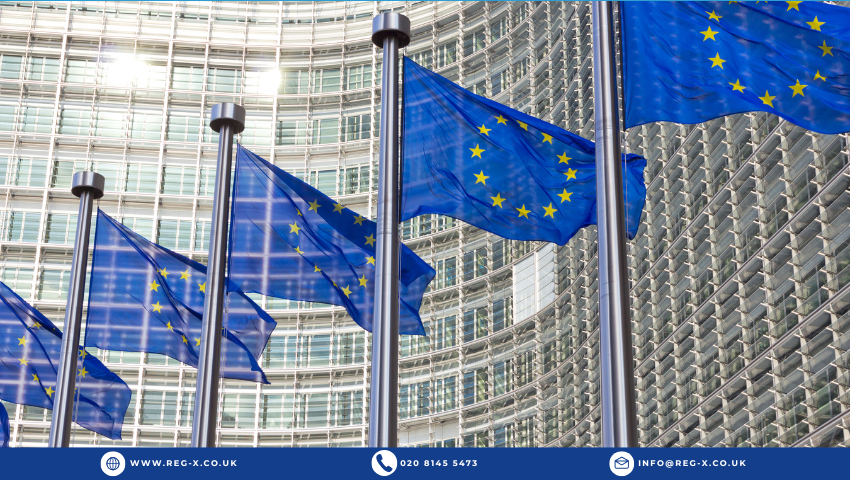The European Commission’s recent move to de-prioritise around 430 non-essential Level 2 acts in financial services until October 2027 signals a major shift in the EU’s regulatory approach. While this decision reflects a drive toward simplification, it also sets the stage for a more focused and efficient delivery of key regulatory reforms especially those tied to the MiFIR Review.
The full announcement from the European Commission can be found here:
De-prioritisation of Level 2 Acts – European Commission
What the Level 2 de-prioritisation means
The EU’s decision effectively pauses the development of hundreds of non-critical technical standards and regulations across the financial services sector. This is not a rollback of policy, but a deliberate effort to reduce the administrative burden and implementation complexity that have accumulated over time.
By taking this step, the European Commission aims to simplify processes and allow both firms and regulators to focus on the most essential regulatory work. The message is clear: the focus is shifting from quantity to quality.
The impact on the MiFIR Review
For firms adapting to the recent MiFIR Level 1 amendments, this de-prioritisation carries two major implications.
1. Reduced regulatory noise
This pause provides much-needed stability. With hundreds of secondary acts on hold, compliance teams gain reassurance that a wave of non-essential, highly granular rules will not suddenly emerge.
For firms already contending with the MiFIR Review’s new transparency and reporting requirements, this creates breathing space. It allows compliance teams to prioritise core deliverables and allocate resources more effectively, particularly in the areas of trade reporting, data aggregation, and transparency calibration.
2. Focus on essential measures
While the non-essential Level 2 acts are delayed, the critical technical standards remain a top priority. Work continues on the most impactful areas of the MiFIR Review, including:
- The Consolidated Tape – establishing a single, authoritative source of market data across venues.
- The Single Volume Cap – maintaining balanced market share between lit and dark trading.
- The Systematic Internaliser regime – ensuring consistent application of transparency requirements.
The European Securities and Markets Authority (ESMA) continues to finalise these measures. These are considered essential to making the MiFIR Review fully operational and achieving the policy’s goals of improving market transparency and competitiveness.
Why this is a targeted simplification, not a slowdown
At first glance, the decision to postpone hundreds of technical standards might look like a regulatory slowdown. However, the MiFIR Review demonstrates that this is actually a recalibration.
By distinguishing between essential and non-essential measures, the European Commission is aiming for smarter regulation rather than less regulation. This approach supports the wider EU objective of streamlining financial rules while still enhancing transparency and market integrity.
The MiFIR Review remains central to that agenda. The most significant reforms, such as those around market data access, transparency thresholds, and the Consolidated Tape, are progressing at pace.
Key milestones to watch
Firms should monitor upcoming milestones on both sides of the Channel:
- November 2025: FCA next steps post-consultation (United Kingdom)
- January 2026: ESMA guidance on remaining MiFIR technical standards (European Union)
These dates will mark important progress points in the implementation of the revised MiFIR framework.
What firms should do now
The de-prioritisation provides short-term relief, but it should not be mistaken for downtime. Firms must use this period to:
- Review and update reporting and transparency frameworks in line with MiFIR Level 1 changes.
- Monitor ESMA publications for upcoming delegated acts and technical standards.
- Reassess internal governance around data management and reporting accuracy.
- Prepare for alignment with future RTS and ITS updates that remain under development.
The most forward-looking firms will use this phase to strengthen their systems and prepare for the renewed regulatory push expected from late 2026 onwards.
How Reg-X supports firms through the MiFIR Review
At Reg-X Innovations, we help firms navigate evolving regulatory frameworks such as the MiFIR Review. Our reporting middleware and consulting services enable compliance teams to:
- Map, validate and submit accurate transaction data.
- Handle complex reporting exceptions efficiently.
- Adapt quickly to changes in Level 1 and Level 2 requirements.
- Maintain high standards of regulatory readiness despite shifting timelines.
The EU’s decision to streamline the regulatory agenda reinforces the importance of reliable systems and expert partners. With Reg-X, firms can focus on core obligations while remaining confident that their reporting is compliant and resilient.
In summary
The European Commission’s de-prioritisation of non-essential Level 2 acts represents a targeted simplification of EU financial regulation. For firms subject to the MiFIR Review, it means fewer distractions, clearer priorities, and more time to get core systems right.
This is not a pause on reform, it is a reset toward a more effective and manageable regulatory environment.
Get in contact with us today to find our how we can support your reporting.




